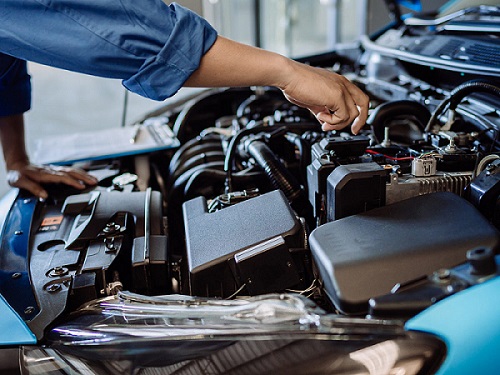A catalytic converter is a part of your vehicle’s exhaust system. This essentially required component reduces the emissions of your vehicle and is federally required. While your engine can still operate without a converter, it won’t pass emissions tests. A clogged converter can cause your engine to stall. Whether clogged, damaged or removed, find out more about your catalytic converter and why you may need to pick up a new one for a DIY replacement.

What Does a Catalytic Converter Do?
This small component uses rare metals and other materials to act as a catalyst. As your gas engine runs, the exhaust fumes run through your exhaust system, including the catalytic converter, muffler and tailpipe. These fumes include gases that are harmful to your health and to the environment, right up until they hit your catalytic converter.
As a catalyst, the converter turns carbon monoxide, carbon dioxide and other harmful fumes into water and carbon dioxide. If this component is damaged, fumes could escape before the converter or pass through without being properly converted.
If the component is clogged, then your engine may not receive the proper air/fuel mixture due to a buildup of fumes. This can result in a loss of acceleration power or an engine that won’t start at all. You’ll usually see a check engine light, which can point you to a leaking or clogged converter.
How much is a catalytic converter? Check it out online or at your local auto parts store. This component can vary between $100 for your own converter to well over $2,000 to hire a mechanic to replace it.
Pros and Cons of Removing Your Catalytic Converter
There are two reasons to consider removing a catalytic converter: driving without one or a DIY replacement project. Attempting to drive without a catalytic converter may seem like a more affordable solution, but it’s also illegal. You’ll not only risk a costly fine and failing emissions tests, but may also expose yourself and those around you to harmful fumes.
As a DIY replacement, there are many benefits to replacing your own converter. To start, use a free VIN lookup to verify you have the right replacement part for your make and model of vehicle. Review installation instructions and see if there are any other components you may need.
Once you gather all the components, it’s a simple matter of removing the old unit and installing the new one. Some are welded in place, while others use a sleeve and brackets to secure it to your vehicle. Welding is a great option if you have the skills and tools, as this prevents an air leak around the converter. Some companies market converter cleaning products, but there’s aren’t proven to be long-term solutions. Be prepared to invest in a new converter if your component is heavily clogged.
Browse replacement catalytic converters online or at your trusted auto parts store today. Don’t let a cracked, clogged or otherwise damaged converter hold your engine back or create harmful fumes. Maintain your vehicle’s exhaust system yourself to save hundreds or thousands in repair costs.




